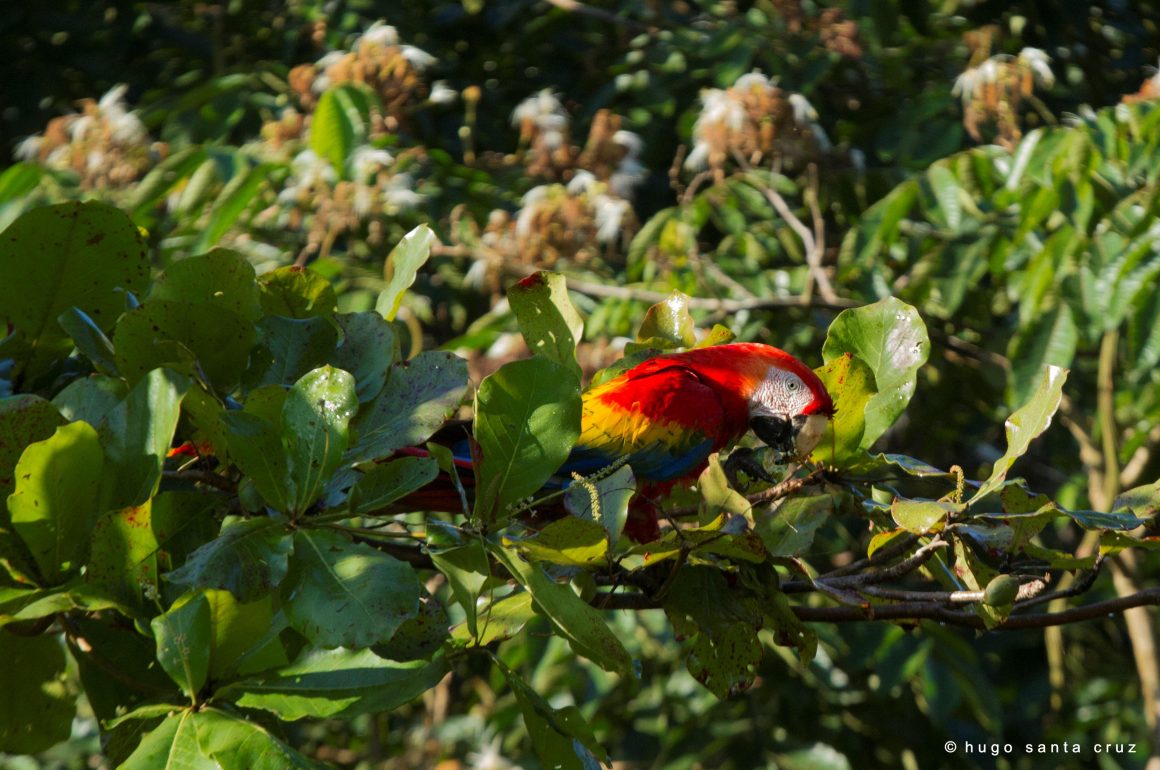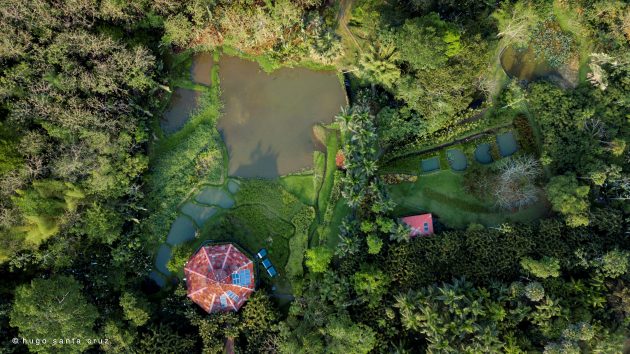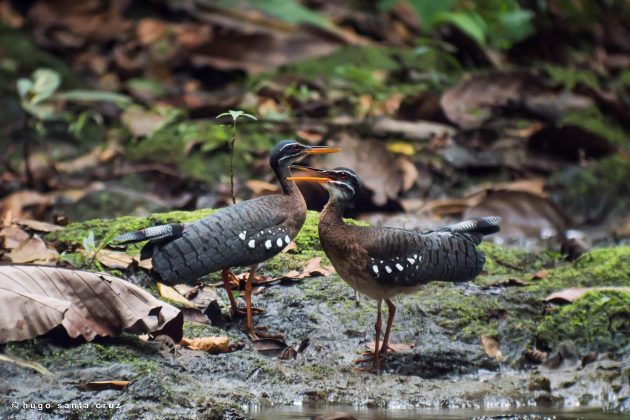
10,000 Birds is running a series of articles by and about tour guides, tour companies, eco-lodges, and other birding travel organizations. We want to help the birding tourism industry come back strong from the COVID pandemic. Please consider using the services described in this post or any of the other posts we are sharing this February.
Just two hours from the capital, is situated the Macao Sanctuary, a natural reserve located in the rain forest, in the mountains of the Costa Rican Central Pacific. In the middle of the reserve is Macaw Lodge, a bird and birdwatcher-friendly eco-hotel that has been welcoming bird lovers from all over the world for almost ten years.
This natural space of almost a thousand acres – once a deforested area for extensive cattle ranching – has been restored for four decades, considering every detail in the aesthetics and functionality of the landscape, seeking the regeneration of bird and wildlife populations that inhabit the ecosystem. Today the reserve contains mature forests, secondary forests, rivers, lagoons, small waterfalls, agroforestry productive areas, and functional gardens; which are the habitat of more than 350 species of birds.

The high diversity of birds and the high quality of the lodge’s specialized tourist services have earned the Macao Sanctuary, being part of the “Costa Rica Birding Hotspots” national network. In recent years, Macaw Lodge has become a mandatory destination for those birders looking for a large list of species, or photographic scenarios, where they can capture the perfect image of hundreds of colorful plumages.
The sanctuary is strategically located in the heart of the Scarlet Macaw Biological Corridor, where other important hotspots for bird watching such as the Carara National Park and the Tárcoles River also stand out. Based at Macaw Lodge, birders travel to these and other important bird sites, further increasing the number of their sightings.

The ecolodge is ideal both for the most fanatical birders, as well as for amateurs or curious people who prefer to develop more relaxed activities. From the balcony of the dining room or the cabins; with different views of lagoons, mountains, and gardens; visitors can delight in the trill or the colorful shapes and sizes of hundreds of birds.
In the company of expert birding guides, the most serious birdwatchers will be able to start their journey before dawn, after enjoying an aromatic cup of coffee or chocolate produced on the farm itself. The birding routes are easily accessible and go through the different micro-ecosystems and different habitats of the sanctuary, finding different species in each of them.
Some of the outstanding birds are Scarlet Macaw, Marbled Wood-Quail, Sunbittern, White-Tipped Sicklebill, White-crested Coquette, Uniform Crake, King Vulture, Baird’s Trogon, Fiery-billed Aracari, Red-crowned x Hoffsmann’s Woodpecker ( hybrid), Rufous-winged Woodpecker, Collared-forest Falcon, Royal Flycatcher, Stub-tailed Spadebill, Long-billed Gnatwren, and Scarlet-thighed Dacnis, among several others.
But the Macao Sanctuary is not only characterized by its high diversity in birds, there are also around one hundred species of mammals, including bats, thirty species of frogs, fifteen species of snakes, and innumerable insects such as butterflies and dragonflies. Either first thing in the morning, at noon, at twilight, or night; the visitor has the opportunity to appreciate a great sample of biodiversity at all times.
We invite you to discover this paradise lost in the Central American jungles and enjoy the birds, with the best comfort and local gastronomic flavors that only Macaw Lodge offers you.
For more information please visit our website or contact us by email at travel@macawlodge.com.











The Macaw Lodge can be summed up in just one word – tranquility. Settled deep in the primary rainforest adjacent to the Carara park, it is an unusual octagonal two-story wooden building with many walls missing, allowing for the air flow, both horizontally, from the entrance to the veranda with the dining area at the opposite side, and vertically, through the central spiral stairs area and semi-open roof. Add to that that rooms have no outer walls, but the mosquito netting instead, from one side-wall to another (not that there were any mosquitoes). I love that place and dream of returning there. Read more of my experiences: https://www.10000birds.com/the-scarlet-pacific-of-costa-rica.htm